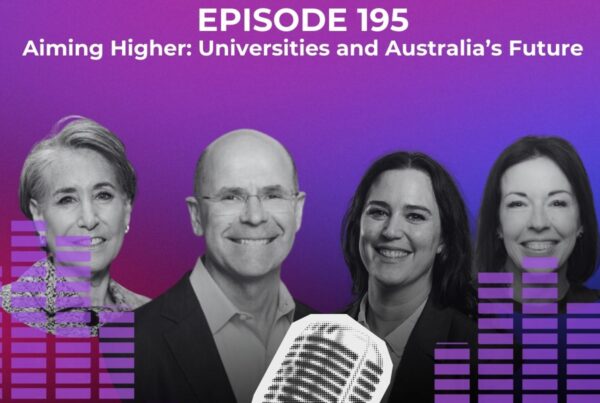Universities Accord must lead to ongoing innovation
The Australian Universities Accord interim report was launched to widespread acclaim.
There has been broad engagement with its overall direction from a national audience of current players within the sector.
This group is feeling appropriately rejuvenated after having had a long period of being isolated from government and policymakers.
As an exercise in rebuilding dialogue between funders and providers of higher education and a collaborative spirit for serving the nation’s needs for graduates over the next 25 years, it has already been successful.
It has achieved much in consensus building, future thinking, and collaborative strategising.
The sector is now widely engaged in celebrating the change in tone, its more positive engagement, and is universally applauding the goals towards growth through equity.
In doing so, current providers are advancing various preferences and tastes for aspects of the detailed proposals.
They do so inevitably, in part, from the perspective of how they might stand to gain or not from specific suggestions for the sector’s evolution.
There is less commentary on why and what they could do differently rather than be funded more for, and there appears some measure of path dependency by current providers in the system.
The overall Accord vision is of growth and of a more equitable, accessible and integrated tertiary education model.
This connects with the social justice soul of the sector. The vision is articulated in a call out and catchphrase in the report of “our goal must be growth for skills through greater equity”.
The vision is of this goal being met by both the evolution of the current system and the emergence of new models and providers, the overriding weight of specific proposals advanced start from the current providers’ viewpoint.
Yet this is set within the report’s call for major change stating that “without change, Australia’s higher education system will rapidly become unfit for purpose.”
The report has potential for a more coherent implementation plan of prioritised proposals to emerge as they are slimmed down and filtered by affordability within public funding constraints and reallocations.
This will be crucial if the change is to be communicated to engage stakeholders and if impact on different groups is to be rationalised.
The next stage of consultation calls for reflection and articulation on areas of agreement and disagreement.
It calls for identifying major gaps and metrics of success that the final report’s recommendations should be measured by.
“The Review believes that bold, long-term change is required to fulfil the mission of higher education in Australia. Change in the sector must be significant. Complacency cannot be tolerated.”
How will we measure that?
My main reflection would be that the report has a strong overall vision that is widely shared by current players and succeeds in engaging them in the debate.
It does so using well considered and nuanced proposals that have immediate focus and impact.
In addition, it provides long-term opportunities to become more innovative and experimental over time.
“Greater priority now needs to be given to educational development and experimentation.”
Many current sector providers will inevitably focus on the present and what short-term changes will mean to them, their funding and their positions.
It is equally important to focus on how innovation and technology will change our delivery modes in the long term and consider skills needs for the future of work and on other aspects of change that require new models and institutions to emerge.
The report is nuanced in seeking to generate a debate on both.
“The Review considers that Australian higher education would benefit from having a wider range of complementary institutions differentiated by their unique missions.”
My sense is that this call in the report will be lower in profile in institutional responses by September 1st, and those from the different groups such as the RUN, IRU, ATN and Go8.
We might get more arguments of why some believe we need more providers like them than anyone arguing for types of providers that we do not yet have in our system.
Do those providers have a voice?
Responses to the interim report are likely to articulate arguments of why the Australian National Regional University, international student fee levies, mission-based community engagement, or fully-funded competitive research grants with paid overheads should be adopted, dismissed, accelerated or kicked down the road for future consideration.
A cynical view would be that we are in danger of 40+ episodes of the ABC show Utopia being recorded simultaneously across the nation while the review panel needs nation-building responses for Australia’s tertiary-education needs.
In the same way that Utopia illustrates how the headline goals of building long-term infrastructure can get lost in short-term partial interests, and concerns over process.
The Accord must not lose sight of these headline goals and the challenge of doubling graduates by 2050, largely from equity groups, through innovation and change.
That vision and ambition is laudable and attractive to all but if we build it from what we currently have, will they all come? And will they all stay and complete?
There is undoubtedly a need for that many more graduates and a political will and social justice expectation that they will arise from equity groups.
But can we be sure it will happen, regardless of the policy settings, if we put all our eggs in the basket of tweaking our current system and provision through current players?
For real change and long-term nation-building oriented innovation in higher education, we need to confront some current realities and take a balanced view of evidence from near and far of what is happening not only with needs for graduates, but also of how demand for tertiary education is changing.
Is short-term softness in demand a cyclical phenomenon or are other structural demand changes at play?
Unless we change the student experience and rates of completion, will enrolling more students from equity groups really generate the future workforce the nation needs?
And is the rate of technological change and emergence of AI, changing future skills needs and lifelong learning needs beyond the ability of current providers to respond.
Have we got the policy settings, and all the institutions we need, for the outcomes and headline goals the report is setting?
Or is there much more we could learn about real change from other sectors and continuing and ongoing insights from more diverse, best practice global higher education innovation?
First published in Campus Review on 14th August 2023.
Martin Betts, Co-Founder of HEDx









